1996 Ascari FGT/Ecosse
The Ascari Ecosse is one of the more obscure supercars of the 1990s, yet being engineered by Lee Noble suggests it could be one of the most thrilling. Glen Waddington finds out.
Photography Justin Leighton.
A NOBLE ENDEAVOUR AWESOME ASCARI ECOSSE
Rare groove '90s supercar: this is the first
The claims are bold. Really bold. Top speed of 200mph, 0-60mph in 4.1 sec, drag factor of 0.31Cx/Cd, 400bhp, 1250kg: even by today's standards, that's fast, sleek, powerful and extremely light. The Ascari Ecosse is quite the supercar.
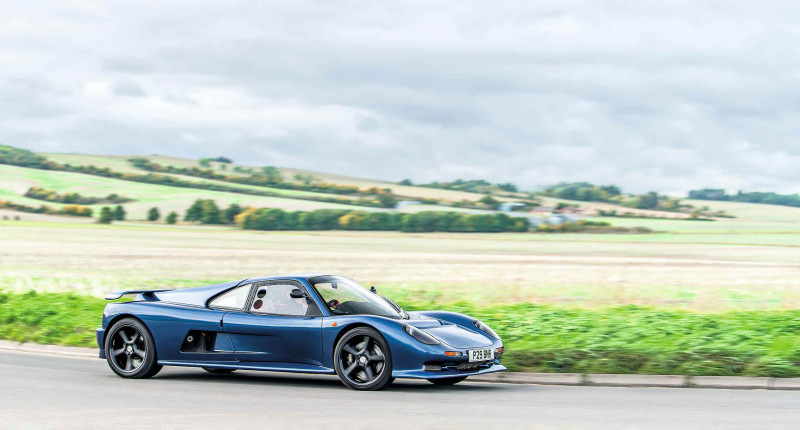
The what, I hear you ask? Exactly. So here’s a very small number: 16. Only that many built, in the late 1990s, yet this car has quite a heritage, and dates from an era when it seemed that — suddenly — supercars were coming from every angle. Possibly the greatest supercar of all time was a product of that decade — the McLaren F1 — as were such greats as the Bugatti EB110 and Ferrari's F50, while the 550 Maranello revived the spirit of the Daytona.
But what about those we remember a little less well? The likes of those include the Yamaha 0X99-11, only three prototypes built, all around Yamaha’s Formula-1 V12 engine, which otherwise powered Brabhams on track. Or how about the two-off Nissan R390, a V8-powered homologation job? The wonderful Cizeta-Moroder V16T, the weird Panoz Esperante, Italy’s De Tomaso Guara, France’s Venturi 400GT, maybe the Spectre R42 (basically a GT40 come back to haunt us)… I could go on.
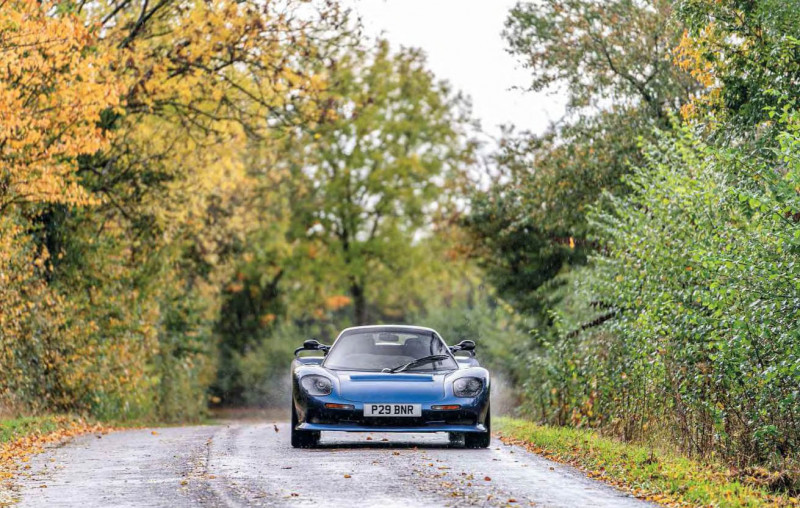
Into that world arrived the Ascari Ecosse, another race-inspired road car with oodles of power from a well-bred V8, in this case a mid-mounted Hartge-tuned BMW engine. And it grew from a proposal made by one Lee Noble.
In the early 1980s, Noble had established his name developing the low-volume, kit-built hardcore Ultima track weapon. Its lightweight spaceframe chassis, composite body and mid-mounted proprietory engine are familiar territory now, but this was a good couple of decades before the Ford- powered Noble M12 put fear into the likes of Porsche. And even that wasn’t his first attempt at a more serious road car. As Noble himself told Octane in 2021 (issue 218): ‘I made the somewhat foolish choice of designing a supercar called the Ascari FGT. But it needed investment to be a success.’
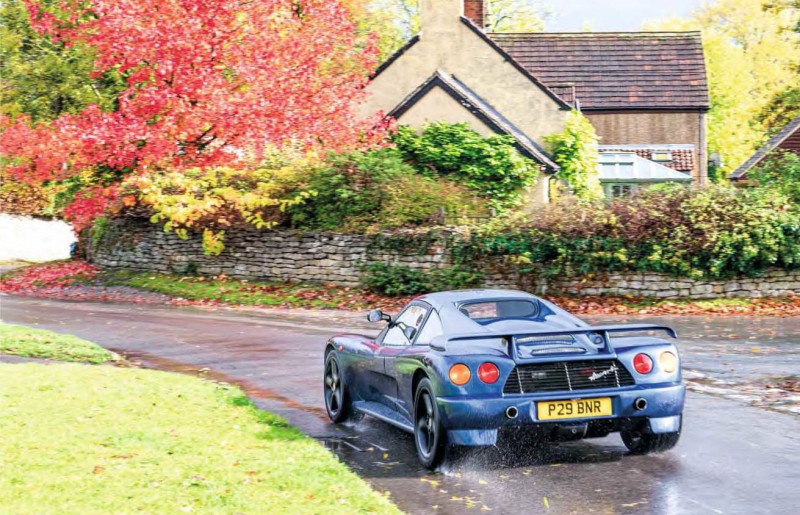
Enter Klaas Zwart, a Dutch businessman with dreams of running a car at Le Mans. He liked the Ascari so much that he bought the company; Noble remained on board only briefly, before establishing Noble Automotive.
‘THAT V8 IS A 5.0-LITRE AND IT RUSHES OUT 420BHP. THE 200MPH TOP SPEED SHOULD BE EASY’
The FGT was introduced in 1995, with a 6.0-litre mid-mounted Corvette V8 in a spaceframe chassis with wishbone suspension, all clad in lightweight glassfibre. Zwart entered the FGT, with a Ford V8, in the British GT Championship and won at Silverstone on its racing debut. He continued to compete with varying degrees of success until 1997, though never quite reached his aim of racing it at Le Mans (it failed to get through pre-qualifying in 1995). Five were built, and it’s believed that four ended up in the USA. But then Zwart s plans changed.
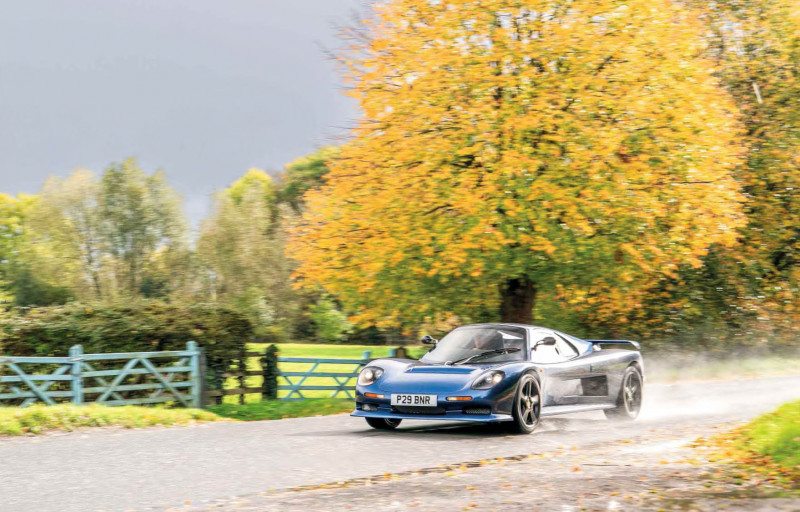
With a Hartge-tuned BMW V8 and a leather-trimmed interior, the FGT morphed into the Ecosse: a fully fledged road-going supercar, named after Zwart’s fondness for his adopted home nation. Production (such as it was) moved from Noble’s old Leicester facility to new premises in Blandford Forum, Dorset, and began in 1998, with a public debut at the 1999 Earls Court Motor Show. The headline figures are for the car in 4.7-litre form; a 4.4-litre version was also available. The last three of the run featured a 5.0-litre (well, 4928cc) version, and the very final one ran a six-speed sequential manual transmission, too.
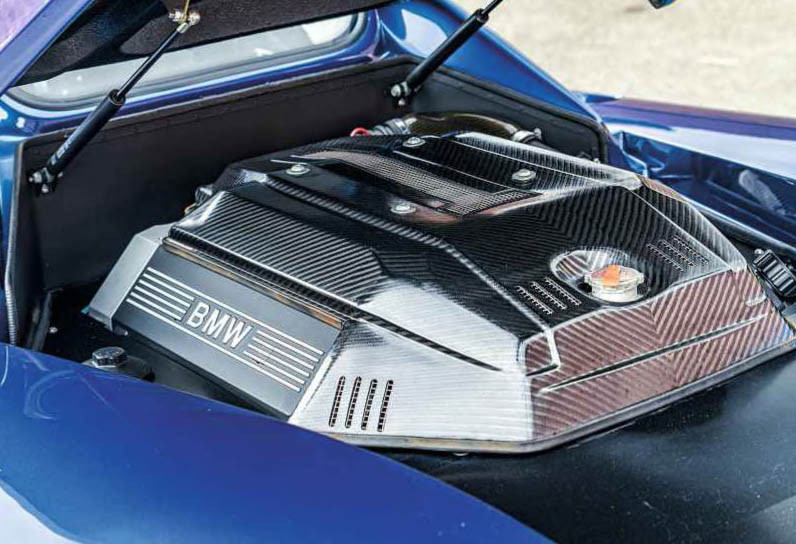
Clockwise, from below Hartge-tuned BMW V8 sounds great, goes hard; Ascari limbers up as speed builds; interior is focused rather than luxurious
So suddenly Britain had a home-grown rival to the Ferrari F355, at least on price. You’d have needed £89,000 to drive an Ecosse home, which bought you a reputed 1700 man-hours of build labour, plus the £20,000 or so that Ascari had to fork out for the Hartge-tuned engine. There was a full FIA-spec roll-cage hidden within each car, and you’d have been sitting on Recaro seats. No corners were cut: even the electrical connectors were aerospace spec, and all suspension and drivetrain components were sourced for strength and lightness rather than on cost grounds. In which case, £89,000 suddenly sounds as though it might not have been quite enough.
‘THE ASGARI IS QUICK, SEEMINGLY FREE OF INERTIA, AND THE V8 GALLOPS ROUND THE REV-COUNTER’
And there’s probably rather a lot of truth in that. Klaas Zwart gave his own initials to a restyled successor, the Ascari KZ1, which was launched in 2005 — at a price of £235,000, with each car built in 235 man-hours at a new facility in Banbury. Every new owner would get to drive their car at the Ascari Race Resort in southern Spain (that’s another story — see later) but, while production of 50 examples was planned, only five were built, plus a handful of track-only KZlRs, and the car company ceased trading in 2010.
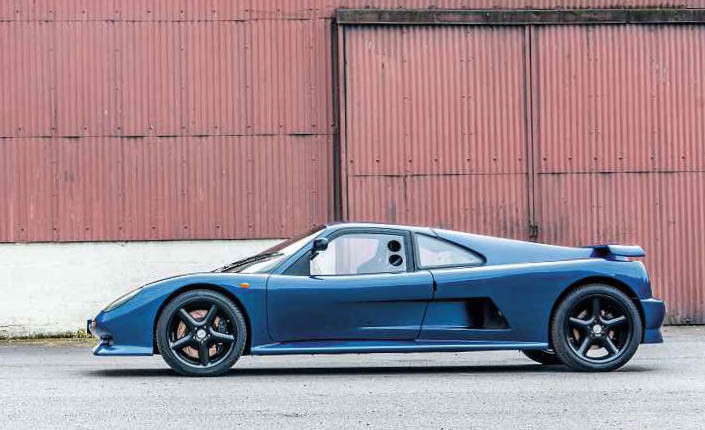
Check out the numberplate on the car in our pictures. Spotted the anachronism? It’s on a P-plate, yet polycarbonate side-windows with vent holes have replaced winding windows, and they’re carried in carbon/Kevlar doors on aluminium hinges — quite different from the road cars’ and, along with a few other parts and sundries, sourced from a container in The Netherlands after a relative of Klaas Zwart, working at the factory when it closed, salvaged the remaining spares. There is additional cross-bracing within, too, plus five-point harnesses. In short, this is the only road-legal track-focused FGT or Ecosse in existence.
It’s handsome rather than beautiful, very much shrink- wrapped around its mechanical and structural package instead of being styled in romantic fashion: that’s simply the Lee Noble way of doing things. Even so, you’re drawn in by the long-wheelbase proportions, and the daintiness of the upper body, while the view along the flanks from the front three-quarter angle is extremely elegant. Sure, the usual low-volume detailing makes it look a little homespun, but it wouldn’t be difficult to imagine how stylish the Ascari could be had there been the money to design bespoke headlamps and tail-lights.
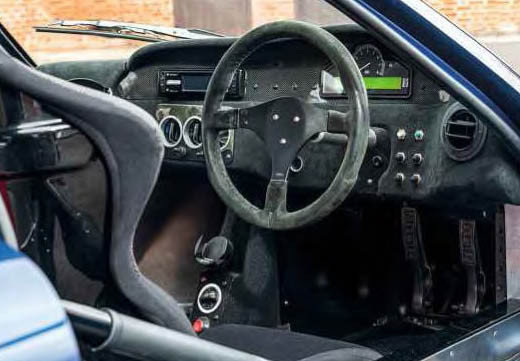
Scrabbling over the sill, insinuating yourself around the bracing and slotting behind the wheel takes not a little effort and is best approached with the mindset that this car isn’t intended for poseurs. Once you’re in, you find a beautifully engineered pedal-box, a high-set steering wheel, a gearlever that’s sited a little too far rearwards, and a tall dash with extremely legible race-style Stack instrumentation. The driving position adjustment is limited to shifting the one- piece shell-case seat back and forth.
Fire up the V8 and your ears are assailed by a busy cacophony, but apply some revs and the purebred nature of this sweet engine becomes vocally clear. Its voice is deep and loud yet cultured, less insistently percussive than an American V8 (or even certain ones that came subsequently from Stuttgart) but with a beat expressed more transparently than you’d hear in, say, a BMW M5.
Finding first gear involves a slight contortion of the wrist and the feeling that you’re battling with lots of linkage, best described as a bit ‘knuckly’. Feed in the revs and out the clutch and you’re away on a wave of torque, which you can then exploit all the further once you’re out of the dog-leg first and finding your way up through the box. The Ascari is quick, seemingly free of unnecessary inertia, and the V8 gallops round the rev-counter, bellowing with an ever- increasing intensity that matches the available thrust.
It all feels extremely stiff-legged at first, thanks to extensive Rose jointing throughout the running gear, but the, er, noble nature of the Ascari’s breeding soon shows through and a little pace brings about a welcome degree of suppleness. Of course, driving this particular example feels rather more FGT than Ecosse, but the very idea of taking a track car and civilising it for the road seems far less crazy once you’ve picked up some speed and experienced how fundamentally refined its mechanical package is.
Ascari is but a footnote in supercar history, yet even so its products are among the more numerous in the list of obscurities from the Ecosse’s era — and the Noble Automotive cars that followed proved just how far the inventive engineer himself could go on bought-in engines and ancillaries, wrapped in swoopy glassfibre. In which case the exotic nature of the Ascari stands in its favour: take it out for a track-day and you’ll enjoy the experience more in this car than you might in many others. And you likely won’t run across another while you’re there.
THANKS TO Grandstand Coachworks Ltd, grandstandcoachworks.com, and to Simon Drabble Cars, which is handling the sale of the Ascari (simondrabblecars.co.uk).
Above Ascari looks fast even when standing still: rear overhang is almost non-existent
HARDLY THE LAST RESORT
Circuito Ascari is a playground in paradise for petrolheads
I've driven at Circuito Ascari a couple of times. It's not a track that crops up in race results; instead, this fabulous 3.4-mile loop in the sun-drenched mountains of southern Spain is a little bit of petrolhead paradise, a ‘race resort' open to members and for occasional hire, including to manufacturers for launches. I mean, where better to sample the latest supercar than on a purpose-built circuit in the sun, with top-notch facilities to hand?
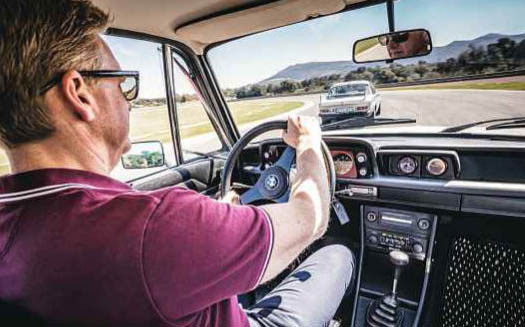
The circuit was designed, funded (to the tune of €40m) and built by Klaas Zwart, being completed in 2003 as a playground for like-minded enthusiasts — several of its 26 corners were inspired by those of other circuits around the world. Being located close to a military training base, Circuito Ascari is not subject to noise limits. And it's all the more exciting for it.
TECHNICAL DATA 1996 Ascari FGT/Ecosse
- Engine 4928cc V8, DOHC per bank, 32-valve, Bosch Motronic fuel injection and engine management
- Max Power 420bhp @ 6100rpm
- Max Torque 384lb ft @ 3500rpm
- Transmission ZF five-speed manual transaxle, rear-wheel drive
- Steering Rack and pinion
- Suspension Front and rear: double unequal-length wishbones, co-axial coil springs and telescopic dampers, anti-roll bar
- Brakes Vented discs
- Weight 1250kg
- Top speed 200mph (claimed)
- 0-60mph 4.1 sec (claimed)
Above, below and facing page — This Ascari began life as the ‘Yellow Demo', starring in brochures; it was subsequently repurposed as the first of the road-going Ecosse line.


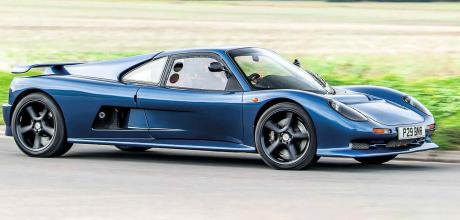
Selling the Ascari Ecosse
Your article about the Ascari Ecosse brought back mainly happy memories of my time at Ascari Cars’ base in Banbury. I joined to take responsibility for sales and marketing activity for the yet-to-be-launched KZ1.
The team in the factory had been pulled from all parts of the automotive and motorsport sectors, and I personally had spent a number of years within the retail motor industry, latterly running MG Rover’s site on Park Lane (we were selling the SV and SV-R) as the flagship dealer.
Klaas Zwart was very focused on motorsport and as part of my interview process I flew to Spain, where Klaas took me at speed around the Race Resort Ascari track. I think collectively we did very well with what little we had and the KZ1 was a world-class product. However, when I joined the company it soon became clear that the KZ1 wasn’t going to be customer-ready for quite a while.
I concentrated on promoting the brand and getting it on the radar of high-net-worth individuals in the meantime. The factory was a perfect setting for tours, as one side housed Klaas’s Formula 1 collection, which included numerous Ferraris and the two-seater Arrows, while the road cars were on the other. Languishing in the corner here was the yellow ex-demo FGT — the car, later repainted blue, in your feature [above] — which was basically little more than a shell.
During one of the tours a Canadian chap called Kenny Schackter showed an interest in getting it back on the road and a price was agreed with a very ‘flexible’ delivery date — my first sale of a roadgoing Ascari! An immeasurable amount of time was spent on preparing it, helped by technicians who had worked on the FGT and Ecosse at Blandford Forum so knew the car intimately. The production Ecosse had a luxury leather-lined interior but the consensus between the customer and ourselves was that it should be more raw and track-focused. As I recall, Kenny was very happy with the finished article.
It was a real shame when it all came to an end as I do think we could have been another Wiesmann if we had sourced the KZ1 engines directly from BMW. The costs to build the car certainly exceeded its £235,000 ticket price, which ultimately finished off the road car product in Klaas’s eyes.